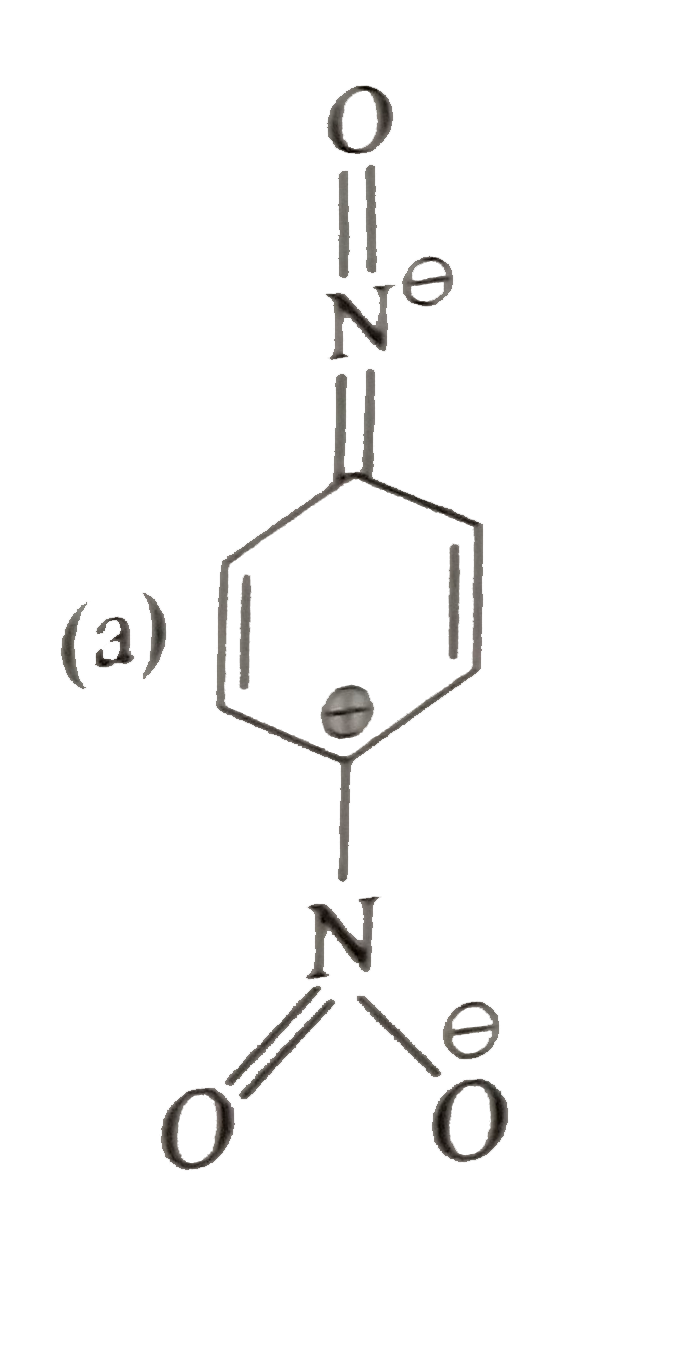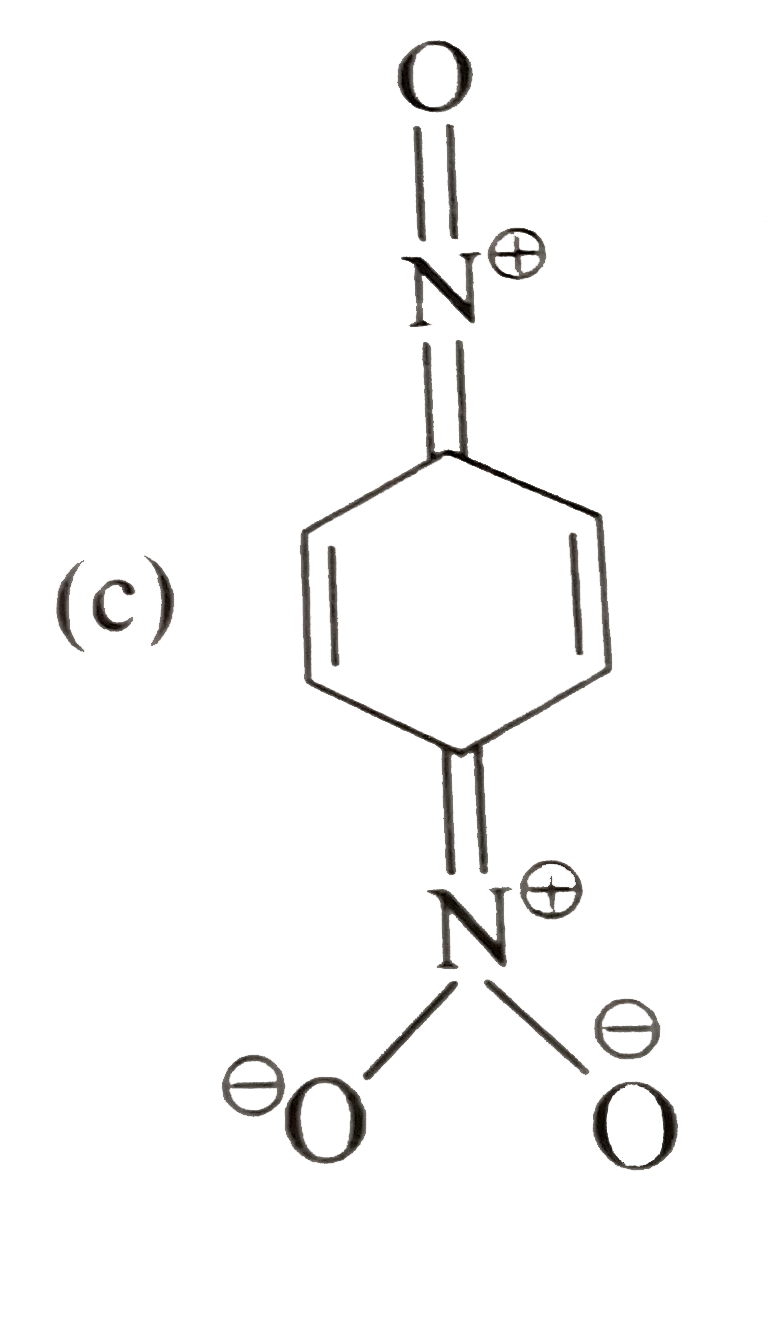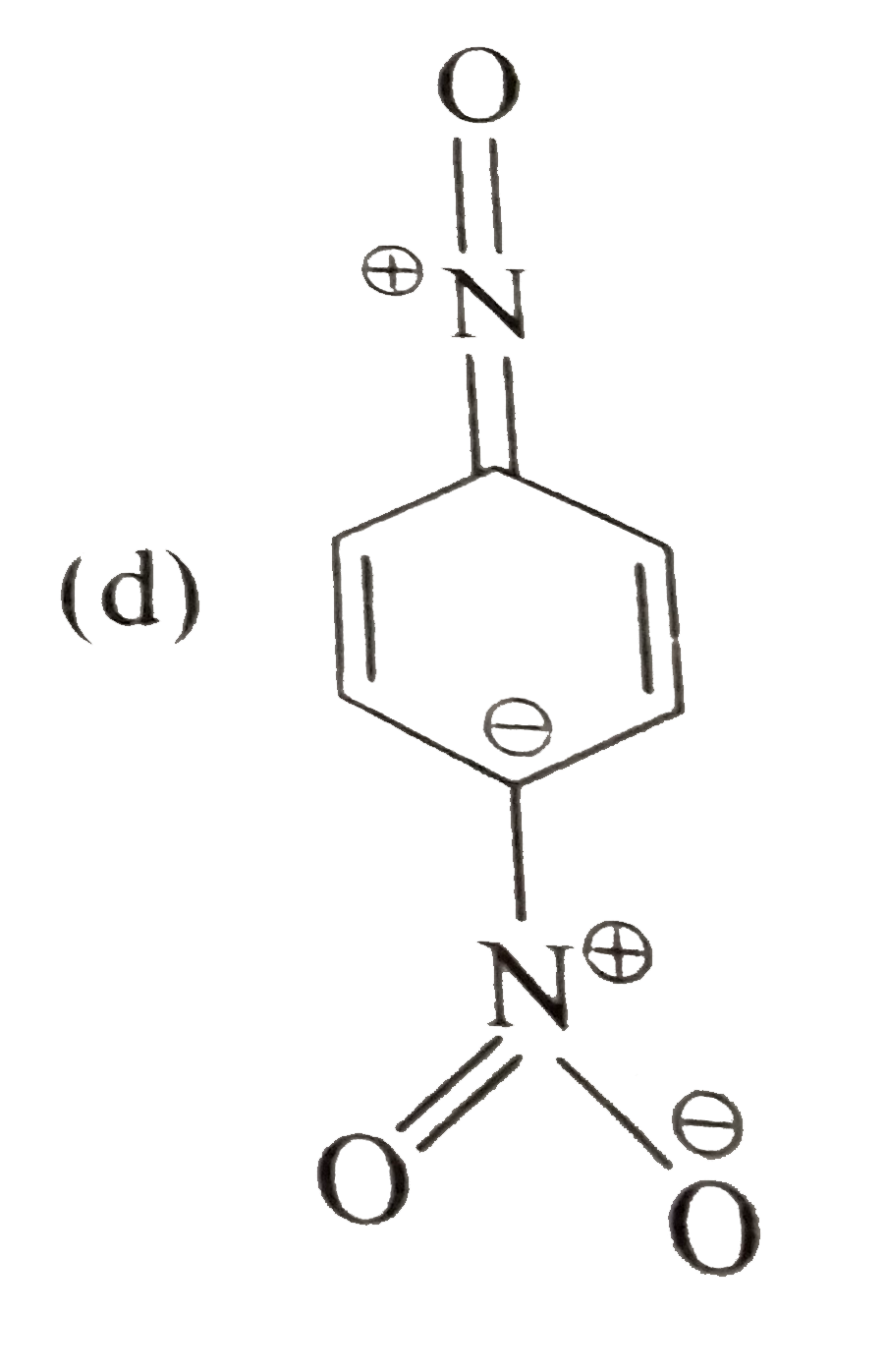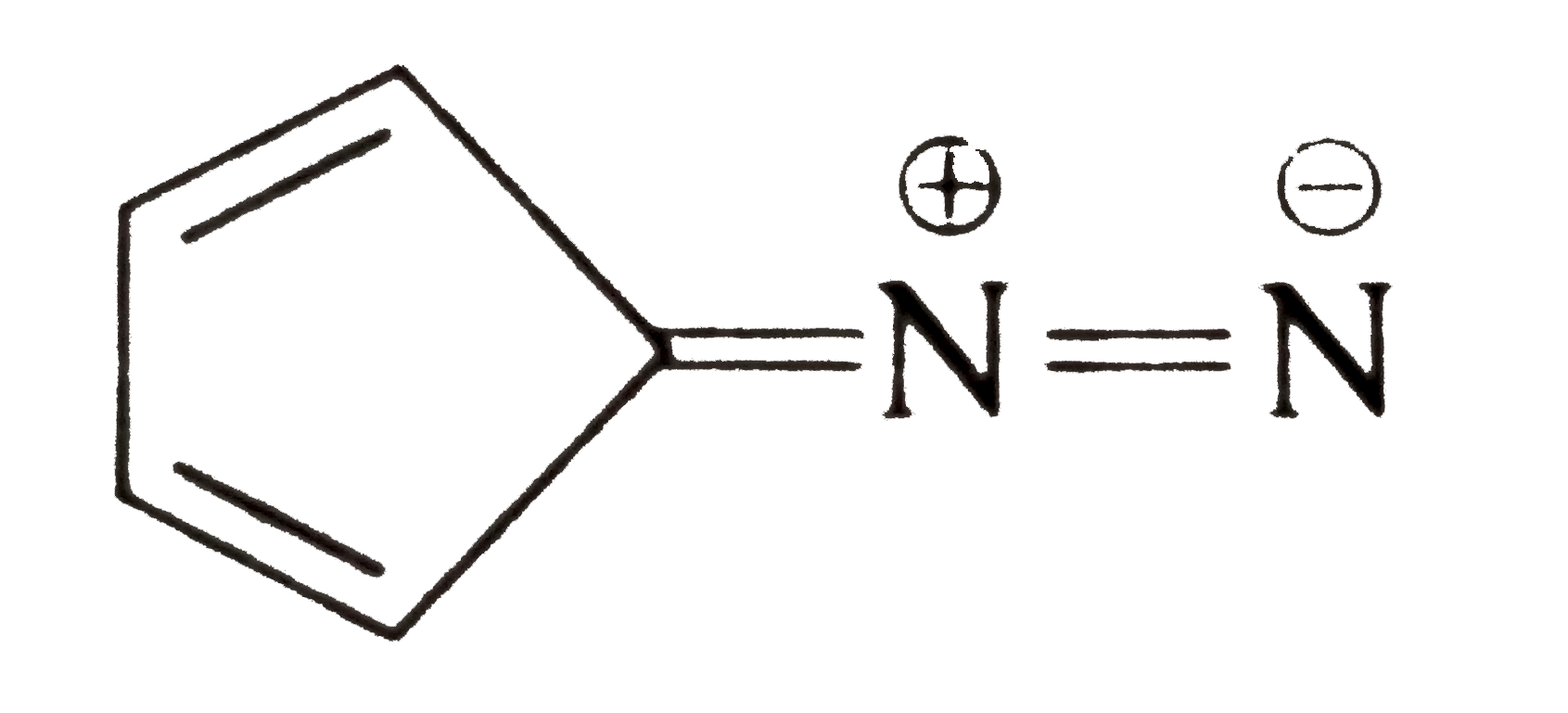The most stable resonating structure is
H2N−⊕CH−CH=CH−OCH3
H2⊕N=CH−CH=CH−OCH3

NH2−⊕CH−ɵCH−CH=⊕OCH3
The correct Answer is:B
To determine the most stable resonating structure among the given options, we can follow these steps:
Step 1: Analyze the Resonating Structures
We need to look at each of the given resonating structures and identify the distribution of charges and the presence of double bonds.
Step 2: Evaluate Charge Distribution
- Positive Charge: A positive charge should be on a less electronegative atom to increase stability.
- Negative Charge: A negative charge should ideally be on a more electronegative atom.
Step 3: Count the Number of Charges
The stability of a resonating structure increases with fewer charges. Therefore, we should count the total number of charges in each structure:
- Option A: Count the charges.
- Option B: Count the charges.
- Option C: Count the charges.
Step 4: Assess the Number of Double Bonds
More double bonds generally indicate greater stability due to increased resonance. Check how many double bonds are present in each structure:
- Option A: Identify the number of double bonds.
- Option B: Identify the number of double bonds.
- Option C: Identify the number of double bonds.
Step 5: Compare the Structures
Now, compare the structures based on:
- The number of charges (fewer is better).
- The position of positive and negative charges (less electronegative atom for positive charge).
- The number of double bonds (more is better).
Step 6: Conclusion
Based on the analysis:
- If Option A has one charge and one double bond, Option B has one charge and two double bonds, and Option C has three charges, then Option B is the most stable structure due to having fewer charges and more double bonds.
Final Answer
Option B is the most stable resonating structure.
---
We need to look at each of the given resonating structures and identify the distribution of charges and the presence of double bonds.
- Positive Charge: A positive charge should be on a less electronegative atom to increase stability.
- Negative Charge: A negative charge should ideally be on a more electronegative atom.
The stability of a resonating structure increases with fewer charges. Therefore, we should count the total number of charges in each structure:
- Option A: Count the charges.
- Option B: Count the charges.
- Option C: Count the charges.
More double bonds generally indicate greater stability due to increased resonance. Check how many double bonds are present in each structure:
- Option A: Identify the number of double bonds.
- Option B: Identify the number of double bonds.
- Option C: Identify the number of double bonds.
Now, compare the structures based on:
- The number of charges (fewer is better).
- The position of positive and negative charges (less electronegative atom for positive charge).
- The number of double bonds (more is better).
Based on the analysis:
- If Option A has one charge and one double bond, Option B has one charge and two double bonds, and Option C has three charges, then Option B is the most stable structure due to having fewer charges and more double bonds.
Option B is the most stable resonating structure.
Topper's Solved these Questions
- TEST PAPERSBOOK - RESONANCECHAPTER - TEST PAPERSEXERCISE - PART - III CHEMISTRY SEC - 1
12 Videos
- TEST PAPERSBOOK - RESONANCECHAPTER - TEST PAPERSEXERCISE - PART - III CHEMISTRY SEC - 2
18 Videos
- SURFACE CHEMISTRYBOOK - RESONANCECHAPTER - SURFACE CHEMISTRYEXERCISE - Section - 5
1 Videos
- TEST SERIESBOOK - RESONANCECHAPTER - TEST SERIESEXERCISE - CHEMISTRY
50 Videos
Similar Questions
Knowledge Check
The most stable resonating structure of p-nitrosonitrobenzene is :
A B
B C
C D
D
The most stable resonating structure of the following molecule is :
 A
A B
B C
C D
D
The most stable resonating structure of following compound is
 A
A B
B C
C D
D
The most stable resonating structure of CH3−..O..−CH=CH2 is
View SolutionIn an aromatic ring, a functional group with lone pair of electron exerts +M effect, some fnuctional groups like, −NO,−NC−CH=CH2 etc., can function both as electron donating (+M) or electron withdrawing (-M) groups. More extended conjugation provide more stabilization.
The most stable resonating structure of compound is
is
View SolutionWhich is the most stable resonating structure ?
View SolutionWhich is the most stable resonating structure?
View SolutionAmong the following, the least stable resonating structure is :
View Solution
